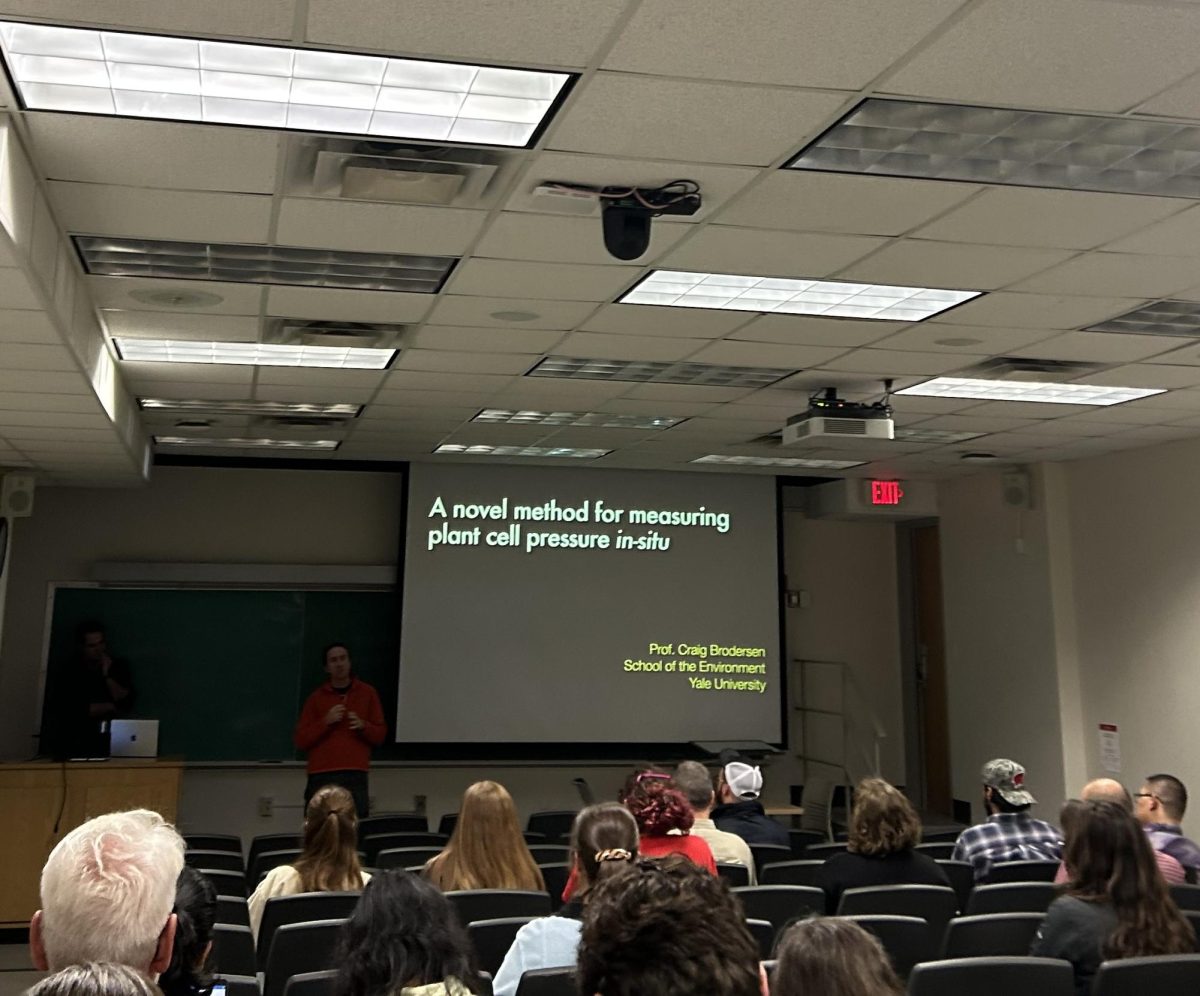On Nov. 14, The Biology Colloquium, hosted by the University of Wisconsin Botany and Integrative Biology Departments, is a series of interactive lectures that cover a wide range of topics. In Birge Hall, the Colloquium hosted Howard and Maryam Newman Professor of Plant Physiological Ecology of Yale University, Craig Brodersen.
Brodersen, who specifically researches the structure and functions of plants, held a lecture titled “Under Pressure: Development of a novel method for measuring plant cell turgor.”
In the discussion, Brodersen spoke about the current stage he’s at in his career and how his transition to more hands-on lab work has led to a lot more collaboration and impactful research.
“It’s important to hear some of the humanity that goes into [the] science,” Brodersen said.
While discussing the process of the scientific method and the trajectory that he took, Brodersen specifically noted the uncertainty that comes with research and how it is especially important to recognize and gain insight through patterns.
On the same note, Brodersen also recognized that throughout all the different steps in these efforts, collaboration between students, faculty and researchers from a wide variety of universities allowed him to overcome challenges.
Graduate students, different colleagues and faculty have all made a big impact on his research, Brodersen said.
With the continued sentiment of collaboration, Brodersen began to discuss the actual research. He explained how an idea that began written on a napkin turned into a new developmental method to measure guard cell turgor. Brodersen said the efforts were targeted to study how plants respond to stress and bubble formation and the specific method of examining this was quite unique.
Brodersen used a laser-induced cavitation method, which uses a high intensity laser to create concentrated bubbles in plant guard cells, he explained. He pointed out that these efforts could not have been done without the help and collaboration with faculty from the Marc Hammarlund lab, which studies neuronal degeneration through laser cavitation. With the help of their equipment, Broderson was able to undergo tests and further his research.
The professor concluded by tying his groundbreaking research directly to the efforts of collaboration and community. He emphasized that without the help of numerous different departments and faculty, he and his lab would not be in the position that they are today.
Brodersen’s research and collaboration is just one of the numerous different types of research that are spotlighted by the Biology Colloquium. The Colloquium will continue to bring together the research community to share and empower the scientific community through collaboration.


